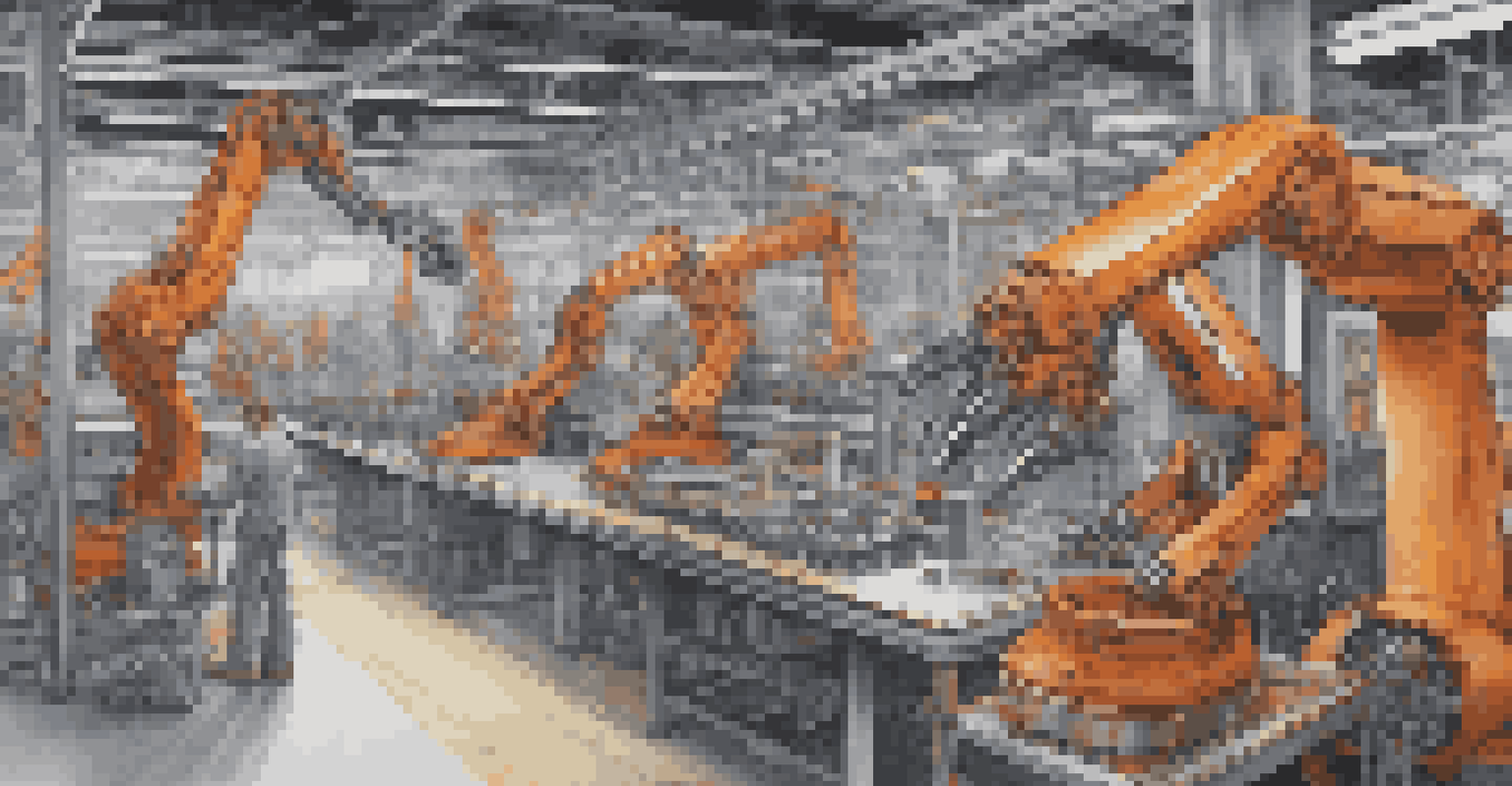Cyber-Physical Systems: Maximizing Efficiency in Smart Factories

Understanding Cyber-Physical Systems in Manufacturing
Cyber-Physical Systems (CPS) are integrations of computation, networking, and physical processes. In the context of manufacturing, CPS connects machines, sensors, and software to improve operations. By merging the digital and physical worlds, these systems enable real-time monitoring and control of manufacturing processes.
The factory of the future will have a digital twin that is a real-time replica of the physical factory, providing insights for optimization and innovation.
Imagine a factory where machines communicate with each other just like humans do. For instance, if one machine is running low on material, it can alert the supply chain system to reorder parts automatically. This level of interconnectedness leads to smoother operations and reduced downtime.
Ultimately, understanding CPS is crucial for manufacturers looking to leverage technology. By harnessing these systems, factories can not only enhance efficiency but also adapt more readily to market changes and customer needs.
The Role of IoT in Cyber-Physical Systems
The Internet of Things (IoT) plays a pivotal role in the functionality of cyber-physical systems. In a smart factory, IoT devices like sensors and cameras gather real-time data from machines and the environment. This data is then analyzed to provide insights that drive decision-making.

For example, a temperature sensor can alert operators if a machine is overheating, allowing for immediate corrective action. This proactive approach minimizes the risk of equipment failure and enhances productivity. In essence, IoT acts as the nervous system of CPS, enabling better communication and efficiency.
CPS Enhances Manufacturing Operations
Cyber-Physical Systems integrate digital and physical processes to improve efficiency and adaptability in manufacturing.
By incorporating IoT into CPS, manufacturers can achieve a holistic view of their operations. This synergy leads to more informed decisions, ultimately driving efficiency and innovation in smart factories.
Enhancing Productivity through Automation
Automation is a cornerstone of cyber-physical systems, significantly boosting productivity in smart factories. With automated machinery, repetitive tasks can be performed faster and with greater accuracy. This not only streamlines production but also allows human workers to focus on more complex tasks.
Data is the new oil, and the ability to analyze it is what will drive efficiency in manufacturing.
Consider the example of an automotive assembly line: robots can handle tasks like welding or painting, which speeds up the process and reduces human error. When combined with CPS, these automated systems can adjust their operations based on real-time data, leading to further efficiency gains.
Incorporating automation within CPS transforms the manufacturing landscape. It allows companies to produce higher-quality products at a lower cost, maintaining a competitive edge in the market.
Data-Driven Decision Making in Smart Factories
One of the most significant advantages of cyber-physical systems is their ability to leverage big data for decision-making. By collecting and analyzing vast amounts of data from various sources, manufacturers can uncover patterns and insights that were previously hidden. This data-driven approach enhances operational efficiency and strategic planning.
For instance, a factory might analyze production data to identify bottlenecks in the workflow. By addressing these issues, they can optimize processes and reduce lead times. This analytical capability empowers manufacturers to make informed decisions that impact both their bottom line and customer satisfaction.
IoT Drives Smart Factory Insights
The Internet of Things enables real-time data collection and analysis, leading to better decision-making in smart factories.
In essence, data-driven decision-making is a game changer for smart factories. It enables continuous improvement and agility, ensuring that manufacturers remain competitive in a rapidly evolving industry.
Real-Time Monitoring and Fault Detection
Real-time monitoring is a critical feature of cyber-physical systems, allowing manufacturers to track operations continuously. This capability leads to quicker fault detection, minimizing downtime and maintenance costs. By having systems in place that monitor equipment health, companies can proactively address issues before they escalate.
For example, if a machine shows signs of wear, alerts can be sent to maintenance teams for immediate inspection. This proactive maintenance approach contrasts sharply with traditional methods, which often rely on scheduled checks that can miss subtle signs of trouble.
With real-time monitoring, manufacturers can maintain high levels of productivity while reducing the likelihood of costly disruptions. This capability is essential for maintaining competitive advantage in today’s fast-paced market.
Sustainability and Resource Efficiency
Cyber-physical systems also contribute to sustainability in manufacturing by optimizing resource use. By closely monitoring energy consumption and material usage, manufacturers can identify wasteful practices and implement more efficient processes. This not only reduces costs but also lessens environmental impact.
Consider a factory that uses CPS to track its energy consumption in real time. By pinpointing areas of excessive use, it can adjust operations to conserve energy during peak times. This approach not only saves money but also aligns with global sustainability goals.
Automation Boosts Industry Productivity
Automation within CPS allows for faster, more accurate task execution, freeing human workers for complex roles and enhancing overall productivity.
Embracing CPS for sustainability is increasingly important for manufacturers. It enables them to operate more responsibly while meeting the growing demand for eco-friendly practices from consumers and regulators alike.
Future Trends in Cyber-Physical Systems
As technology continues to evolve, the future of cyber-physical systems looks promising. Emerging trends such as artificial intelligence (AI), machine learning, and advanced robotics are set to further enhance the capabilities of CPS in smart factories. These technologies will enable even greater automation and more sophisticated data analysis.
For instance, AI can predict machine failures before they occur by learning from historical data patterns. This predictive maintenance capability will revolutionize how factories operate, allowing for even more uptime and efficiency.

Staying ahead of these trends is crucial for manufacturers seeking to maintain their competitive edge. By investing in the latest advancements in CPS, they can ensure that their operations remain efficient, innovative, and future-ready.